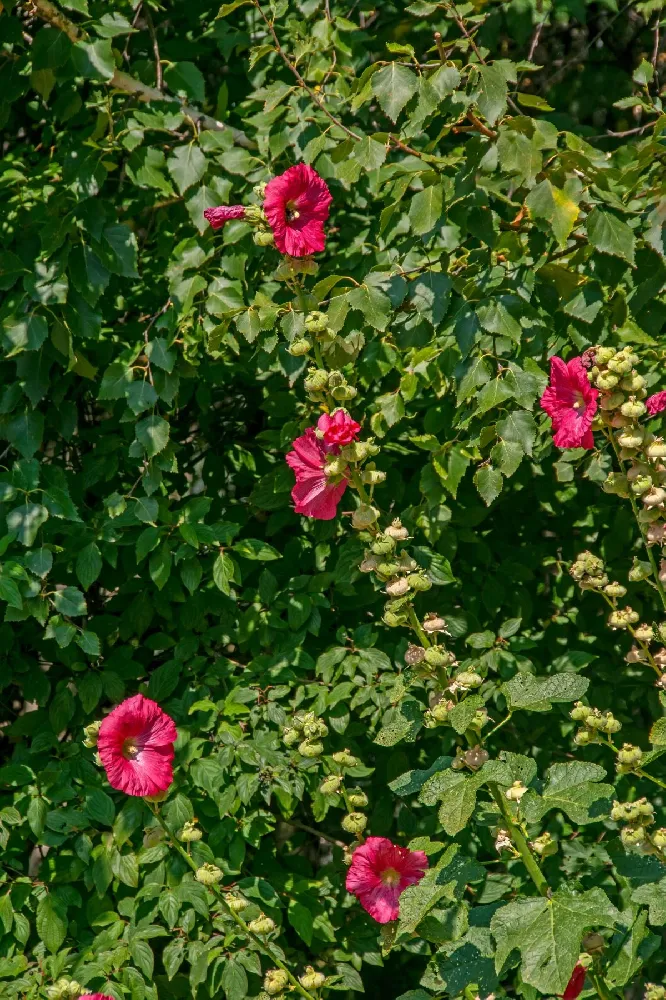Trees and Plants with Red Flowers for Sale
Filters
Price Range
Growing Zones
Plant Type
Sunlight
Mature Height
Plant Characteristics
43 Results
-
Growing Zone(s): 6-10$36.95
$41.95Save up to 11% -
Growing Zone(s): 4-9$39.95
-
Growing Zone(s): 6-10$99.95
$139.95Save up to 28% -
Growing Zone(s): 5-10$79.95
$83.95Save up to 4% -
Growing Zone(s): 5-9$179.95
-
Growing Zone(s): 8-11$124.95
$159.95Save up to 21% -
Growing Zone(s): 5-10$57.95
$61.95Save up to 6% -
Growing Zone(s): 8-10$59.95
$98.95Save up to 39% -
Growing Zone(s): 5-9$114.95
$144.95Save up to 20% -
Growing Zone(s): 4-8$36.95
$37.95Save up to 2% -
Growing Zone(s): 3-11 / 10-11$91.95
$144.95Save up to 36% -
Growing Zone(s): 6-9$50.95
$62.95Save up to 19%
Trees and Plants with Red Flowers – Buying & Growing Guide
No color is more eye-catching than a bold shade of red. When your trees show blooms in that hue, you can rest assured that your garden will have plenty of visual interest. Trees with red flowers make a strong statement in the landscape regardless of the variety you choose to plant. Below are some favorites among green thumbs.
Types of Trees With Red Flowers
| Type | Growing Zones | Mature Height | Harvest Season | Sun | Features |
| Red Dogwood, Cornus florida | 5-9 | 20-25 feet | August | Part Shade: 3-5 hours | Many red flowers with a slight pinkish tinge |
| Miracle on the Hudson™ Rose Tree, Rosa ‘Miracle on the Hudson’ | 3-9 | 5-8 feet | None | Full Sun: 6-8 hours | Small, disease-resistant rose with striking red petals |
| Black Diamond® Radiant Red Crape Myrtle, Lagerstroemia hybrid ‘PPAF’ | 6-10 | 10-12 feet | None | Full Sun: 6-8 hours | Petals are bright red the leaves are nearly black |
| Royal Poinciana Tree, Delonix regia | 4-11 | 20-30 feet | None | Full Sun: 6-8 hours | Irregular branches hold vibrant red flowers |
| Fire Light® Hydrangea Tree, Hydrangea paniculata ‘Fire Light’ | 3-8 | 4-6 feet | None | Full Sun to Part Shade: 4-8 hours | Large flower panicles that are red, white, and pink |
| Garnet King™ Emerald Empire® Crape Myrtle Tree, Lagerstroemia indica | 6-10 | 15-20 feet | None | Full Sun: 6-8 hours | Moderate size between small tree and shrub, impressive scarlet blooms |
| Black Diamond® Crape Myrtle – Best Red™, Lagerstroemia indica | 6-10 | 10-12 feet | None | Full Sun: 6-8 hours | Multi-stemmed plant, amazing color contrast between red flowers and leaves |
| Red Rocket Crape Myrtle, Lagerstroemia indica ‘Red Rocket’ | 6-9 | 20-30 feet | None | Full Sun: 6-8 hours | Profuse blooms are primarily red with tiny yellow accents |
| Thunderstruck™ Coral Boom™ Crape Myrtle Tree, Lagerstroemia x ‘JM5’ PPAF | 6-10 | 12-15 feet | None | Full Sun: 6-8 hours | Upright form with dark leaves and vibrant red flowers |
| Petite Red Imp™ Crape Myrtle Tree, Lagerstroemia indica ‘Monimp’ | 7-9 | 3-5 feet | None | Full Sun: 6-8 hours | Pinkish-red flowers, overall small size, and shape |
How to Plant and Care for Red Flowering Trees
The wide variety of trees you can plant gives you many options to select from. However, that variety makes plant care a bit more complicated. Before you plant any species, make sure you have taken time to study the conditions and care that the plant needs.
Choose a planting location that includes a suitable amount of daily sunlight and has the ideal degree of soil moisture. Once you find a good place, dig a hole with a generous width and depth that matches the root ball’s height.
After planting, provide plenty of water for your new flowering tree so it can overcome the shock of the planting process. At this stage, prune any branches or stems that are dead, broken, or diseased.
Regarding ongoing care, you must give your red flowering trees fertilizer. Each plant calls for a different type of fertilizer and a distinct fertilization frequency. You will want to continue with regular pruning. In most cases, removing spent blooms at specific parts of the year will cause more flowers to emerge in the next season.
If you are planting red flowering trees that bloom in the early spring, you may want to consider providing wind protection. In some instances, a late-season winter wind can damage the newly-emerged flower petals. Shelter from wind goes a long way in protecting the blooms that give red flowering trees their exceptional ornamental value.















